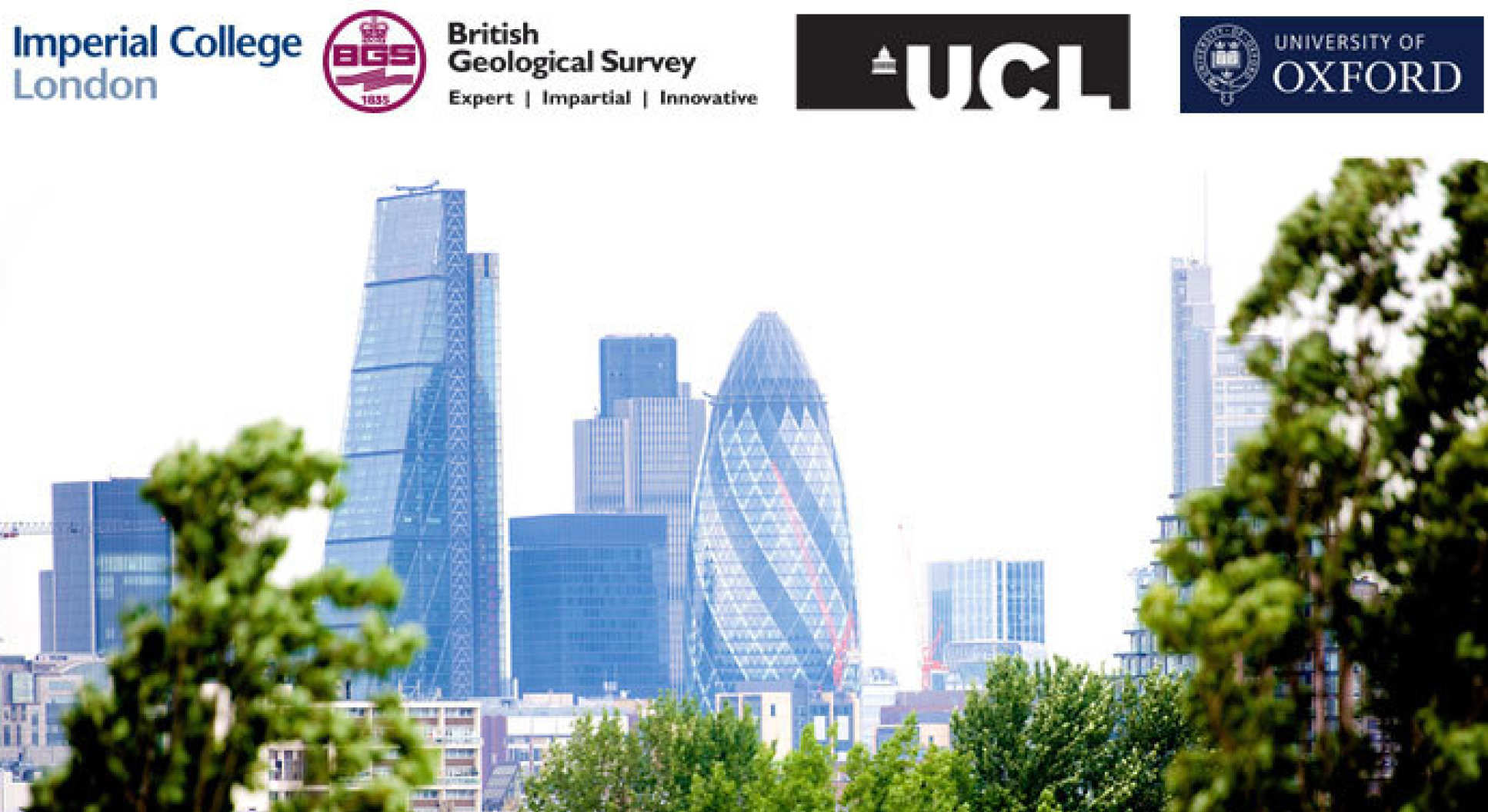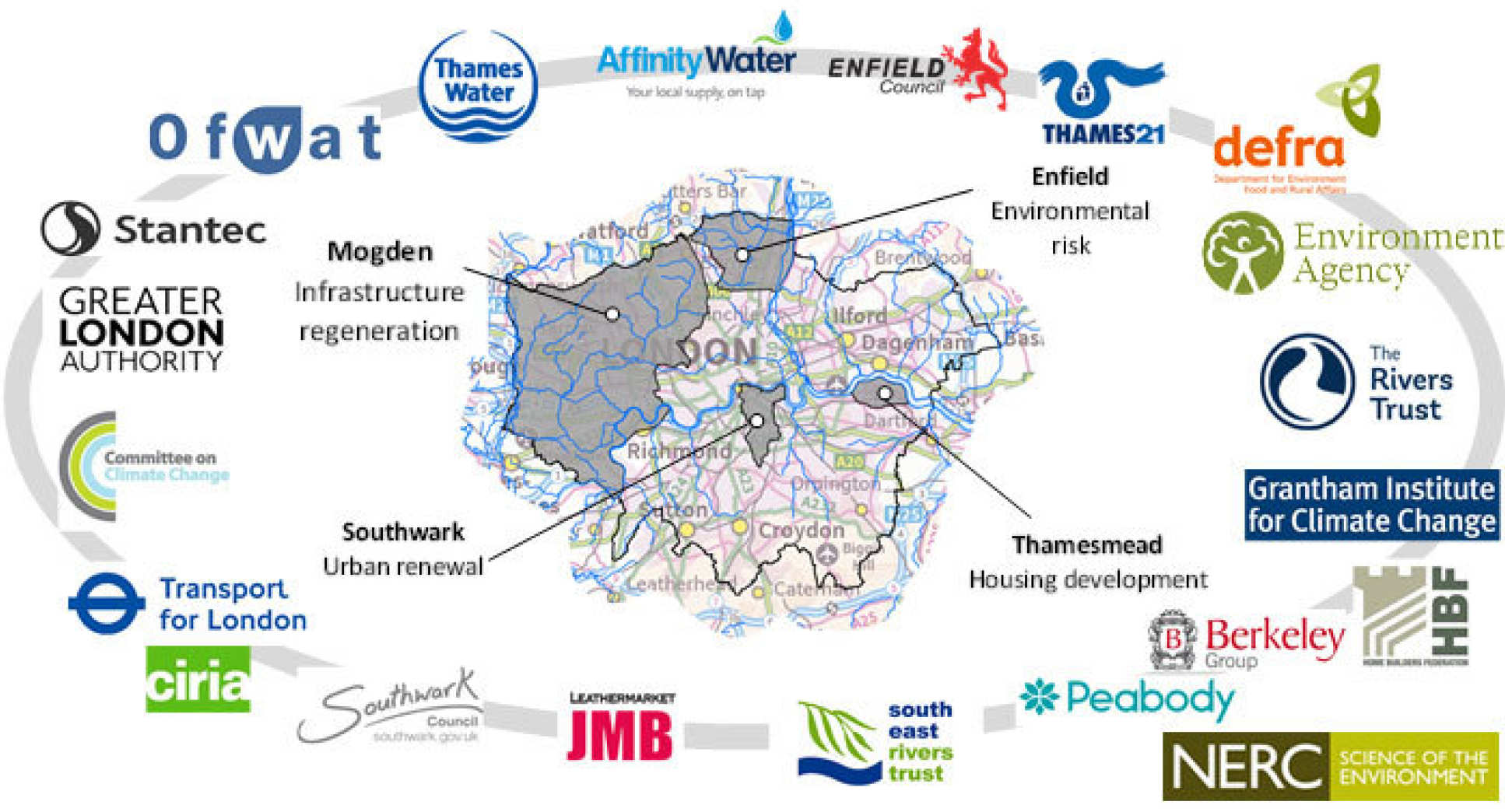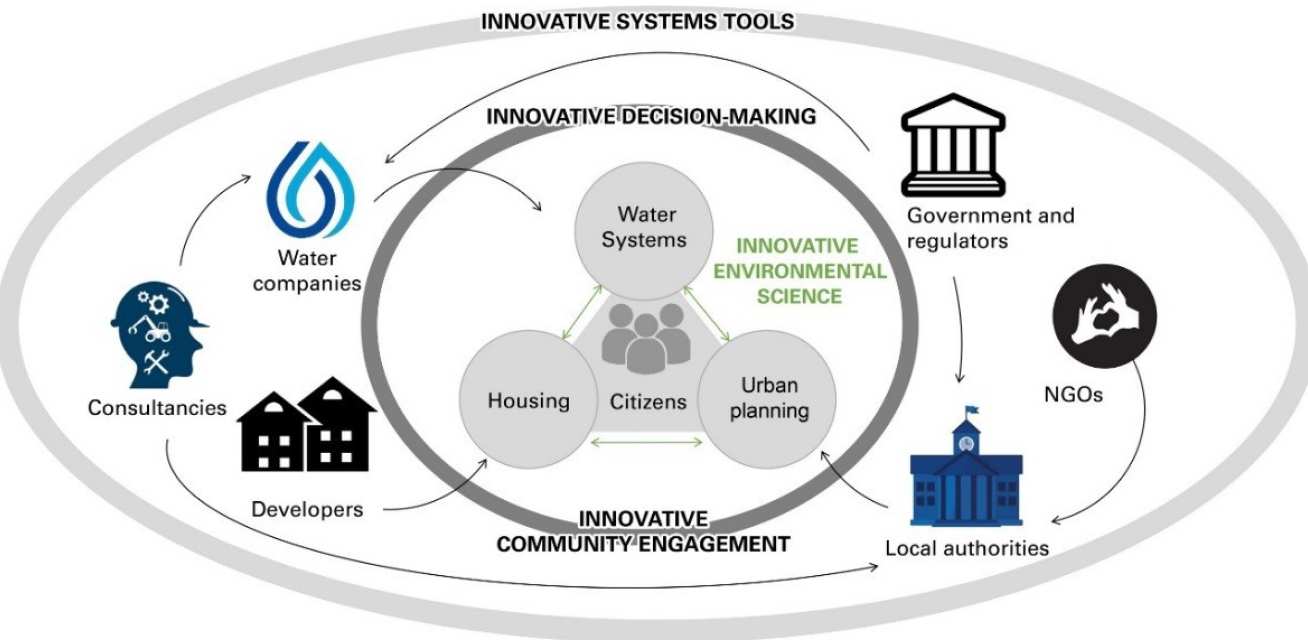Community Water Management for a Liveable London (CAMELLIA)
 Focusing on London, CAMELLIA will bring together environmental, engineering, urban planning, socio-economic and organisational experts with institutional and industry stakeholders and citizens to co-develop a systems approach to urban water management, which will provide integrated solutions to enable required housing growth in London whilst sustainably managing water and environment in the city.
Focusing on London, CAMELLIA will bring together environmental, engineering, urban planning, socio-economic and organisational experts with institutional and industry stakeholders and citizens to co-develop a systems approach to urban water management, which will provide integrated solutions to enable required housing growth in London whilst sustainably managing water and environment in the city.

Why is CAMELLIA needed?
Currently there is a shortage of housing in London, particularly affordable homes, and 50,000 new homes per year are planned for the city to 2036. The growing population of London and its planned housing require water to be supplied and flooding to be reduced as far as possible. However, the region is vulnerable to water shortages (droughts) and floods. In the spring of 2012 London was facing potentially its worst drought. By contrast, the prolonged rainfall that then fell over the summer caused localised flooding and the Thames barrier being closed twice. This swing, over half a year, from extreme shortage of water to excess highlights the major challenge London faces to manage the water environment.
This challenge is likely to worsen with climate change alongside the expected economic growth of London and associated increase in population. It also shows how droughts and flooding are two ends of a hydrological spectrum, which needs to be managed as a whole.

The CAMELLIA project
The aim of the five-year ‘Community water management for a liveable London (CAMELLIA)’ project is to bring together environmental, engineering, urban planning and socio-economic experts with governmental and planning authorities, industry, developers and citizens to co-develop solutions that will enable required housing growth in London whilst sustainably managing its water and environment. This aim will be addressed through the following 5 subsidiary objectives:
- Develop strategic partnerships with various stakeholder communities involved and affected by water management decisions;
- Work with partners to understand communal perceptions of the water system, challenges and common goals;
- Collaborate with stakeholders to collate, develop and integrate models to represent all the interacting components of the urban water cycle, thus underpinning joint modelling of the water environment;
- Develop system analysis tools so that model information can be translated into a common language facilitating informed dialogue, discussion and decisions between the various stakeholders, enabling them to reach agreed solutions to the challenging water management problems that face London;
- Demonstrate effectiveness of approach and accompanying tools through a set of four case studies: urban renewal (Thamesmead); housing development (Southwark); water infrastructure regeneration Mogden, W London); flood risk & water quality (Enfield). These will be up-scaled to produce London-wide models facilitating collaborative water management and decision making across the capital.
CAMELLIA research team
The consortium research team will consist of the following lead scientists:
Dr Adrian Butler, Dr Ana Mijic, Dr Alexandra Collins, Dr Athanasios Paschalis, Imperial College London
Dr Chris Jackson, Dr Andrew Hughes, Helen Bonsor, Stephanie Bricker, Carl Watson, BGS
Prof Sarah Bell, Dr Nicole Zimmermann, Dr Tse-Hui Teh, University College London
Dr Simon Dadson, Dr Catharina Landström, University of Oxford


